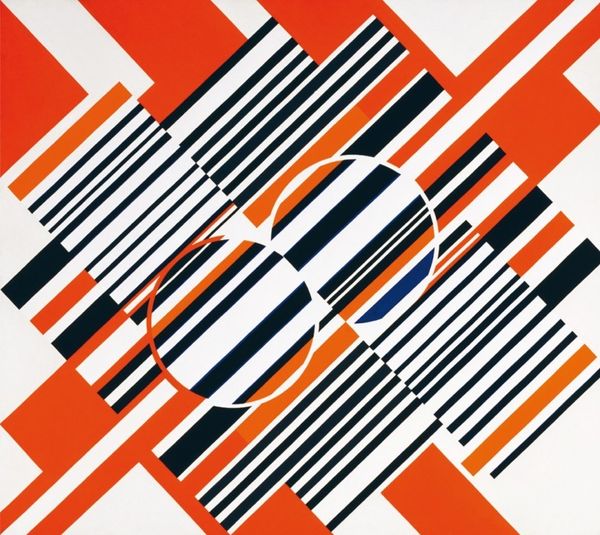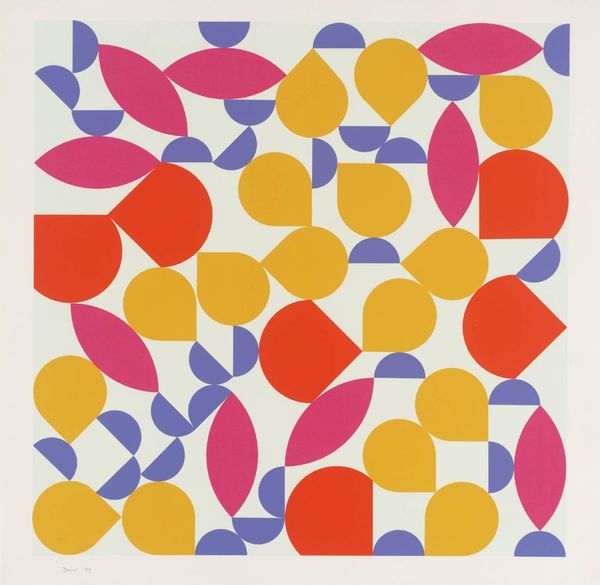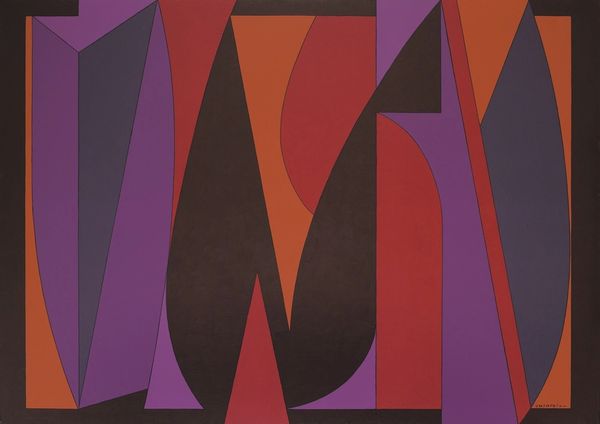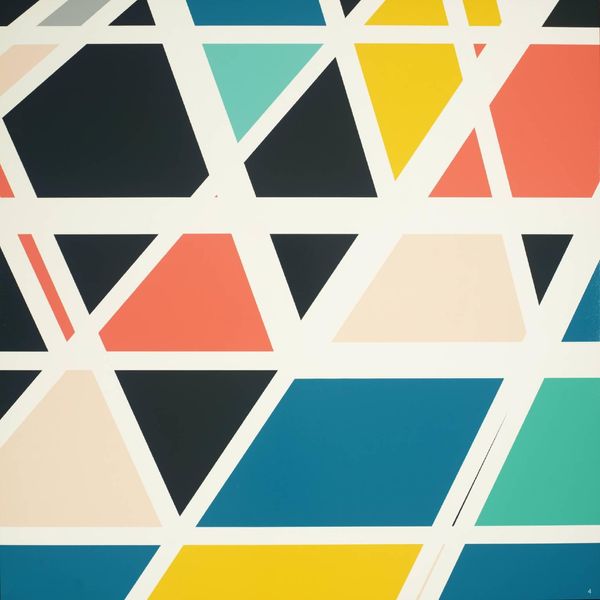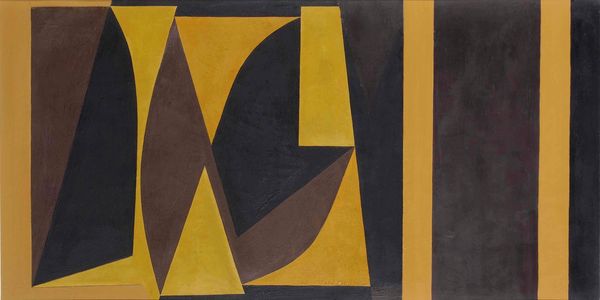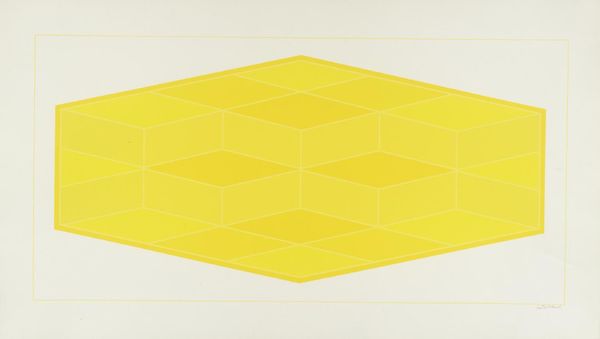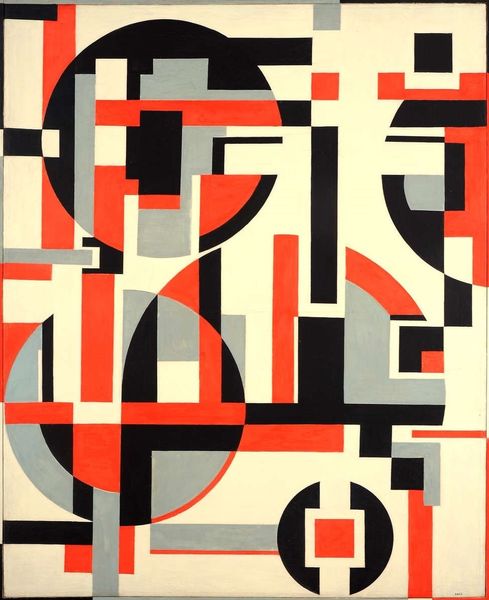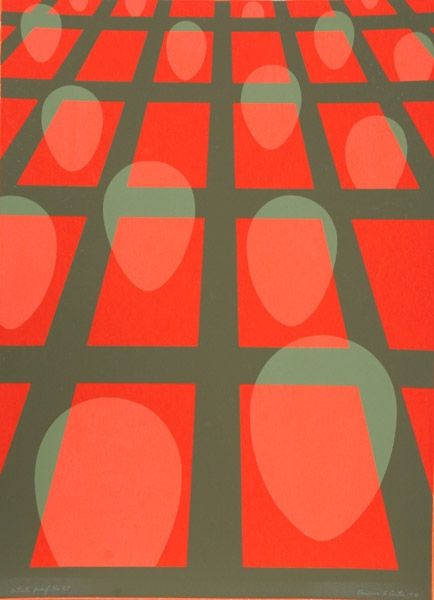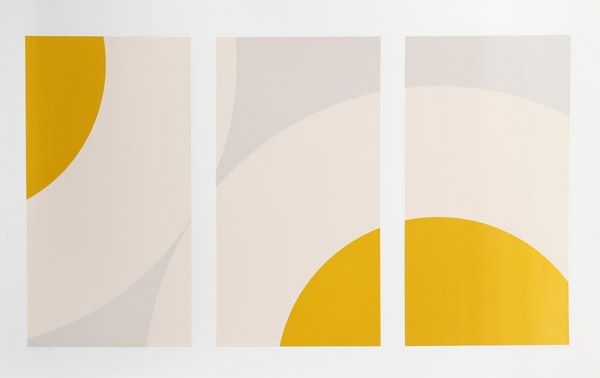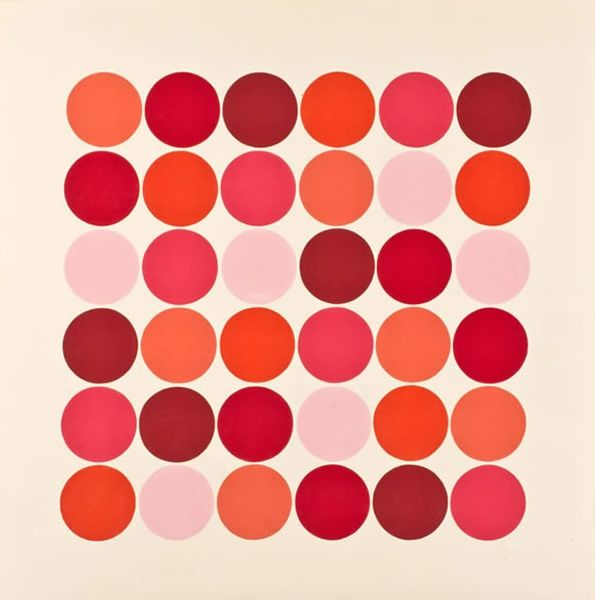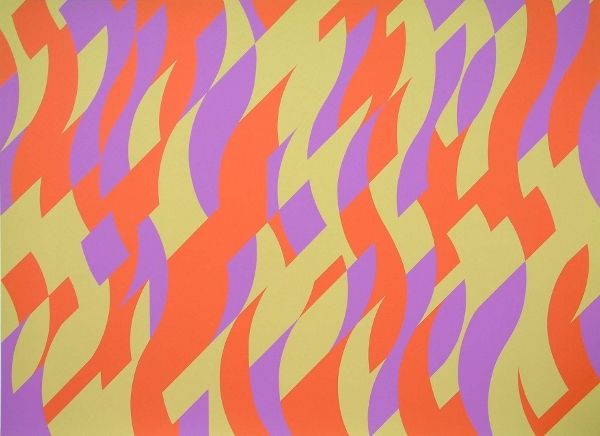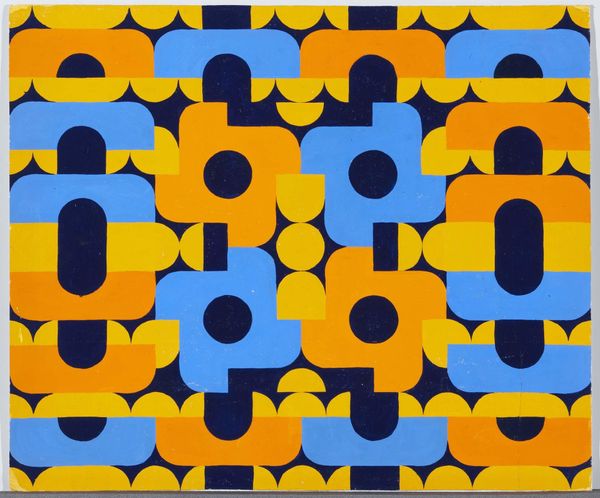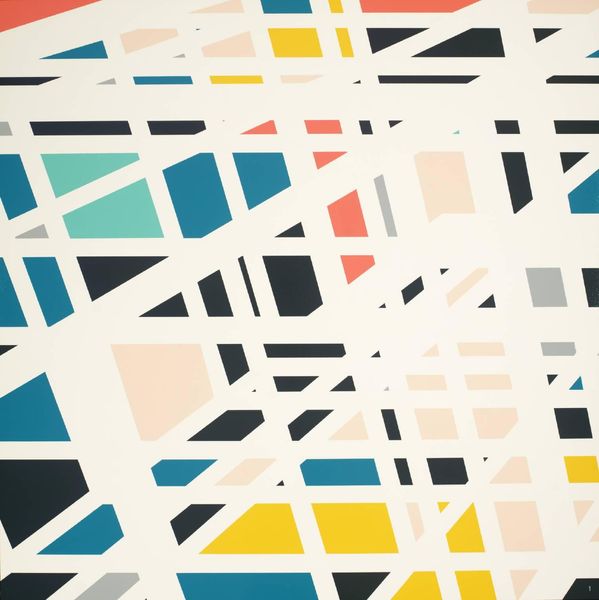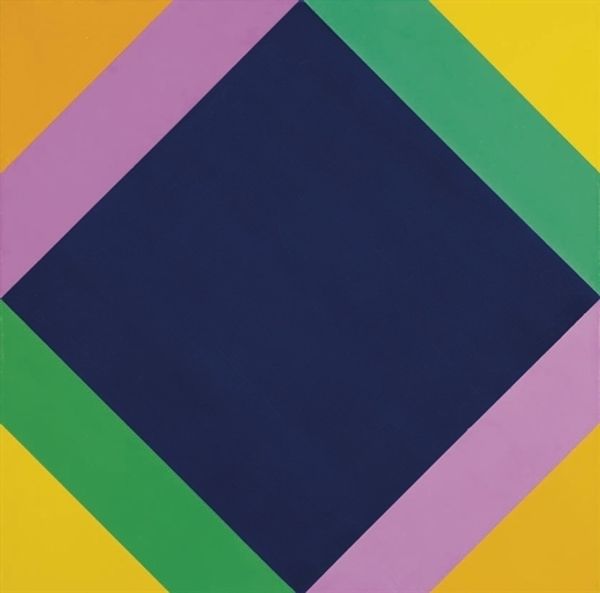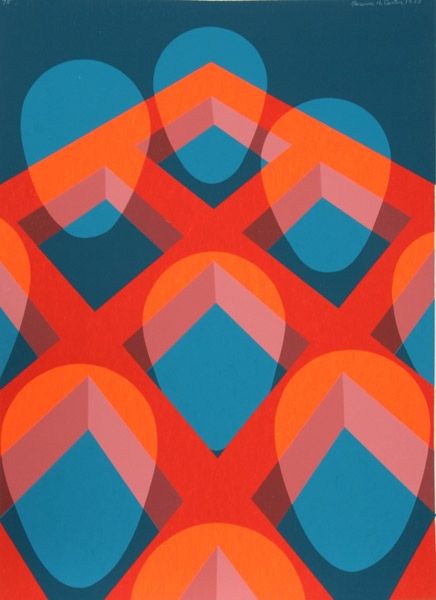
acrylic-paint, typography
#
op art
#
acrylic-paint
#
geometric pattern
#
typography
#
geometric
#
geometric-abstraction
#
pop-art
#
hard-edge-painting
Copyright: Modern Artists: Artvee
Curator: Looking at Robert Indiana’s “Aspen Love” from 1968, painted in acrylic, I'm immediately struck by its sheer graphic boldness. Editor: It's certainly… eye-catching. The bright orange and yellow really pop, and the hard edges of the lettering give it a strong visual punch. It’s deceptively simple. Curator: Deceptively is key. Let’s consider the context of Indiana's work. Pop Art, especially his engagement with accessible imagery and commercial processes, challenges the very definition of 'fine art'. His iconic 'LOVE' image, and pieces like this, were mass-produced, appearing on stamps and prints. He transformed emotion into a commodity. Editor: And yet, look at the formal arrangement. The square canvas is cleverly divided into four parts, the word "LOVE" is repeated, mirrored and slightly altered in each quadrant. The slanted "O" introduces a dynamic tension within the otherwise rigid grid. The color choices are deliberate—a visual harmony, playing with contrast and balance. Curator: Absolutely, but it's important to understand how the silkscreen printing process allows for crisp lines and bold color fields. This was reproducible art made for the masses, not just an elite art-world crowd. What does that accessibility and means of creation *mean*? How does it challenge notions of artistic labor? Editor: While its origin is decidedly Pop Art, its visual appeal and clean execution invite reflection upon design and structure. The stark simplicity allows a wide range of interpretations. The way the letters intersect creates a powerful geometric relationship. Curator: Exactly! The form facilitates that open interpretation precisely because it was made so readily available. It's art freed from its high-art pedestal, circulating widely, open to a democratic consumption. Editor: Well, I still appreciate the artful composition and how the basic formal structure underpins everything. Those colours alone evoke different emotions and memories. The tension, or energy, is built in—all independent of the modes of production, which existed to reproduce it. Curator: I see what you mean about its evocative colors and geometric composition, it certainly is beautiful, though I always go back to thinking about art in circulation—what pieces are made to *do*. Editor: Indeed, a satisfying work to examine. It provides a lot to consider for artist and critic alike.
Comments
No comments
Be the first to comment and join the conversation on the ultimate creative platform.
